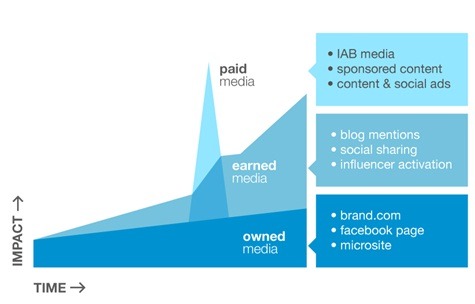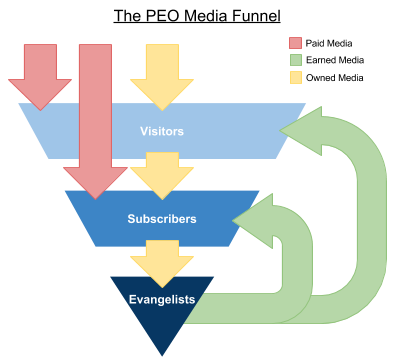The definition of an “important” fan is different for every Page – for some, it’s the target demographic that is more likely to purchase the business’ product. For other Pages, like fashion and apparel brands, it might be the most influential consumers, whose tastes spread to a wider audience. These audiences can be defined by any parameters that are accessible in Facebook’s Self-serve advertising tool – demographics, precise interests, connections to other apps and pages, etc.
At PageLever we call these subsets of a Page’s audience the “target audience” – the portion of the Page’s audience that is most important to reach, because not all fans are created equal.
When a Page posts to all its fans, only a percentage of the total fans see the given post. Of these fans, an even smaller percentage are in the target audience. A post that reaches 10,000 fans might only be reaching a few hundred fans in the target audience. This is where many large Pages struggle to see ROI.
However, with a surprisingly small amount of money spent on Sponsored Page Post Stories, this is a completely solvable issue.
When used well, Sponsored Page Post Stories ensure that a Page’s content reaches fans in the target audience far more often than fans outside the target.
Let’s walk through how to create a Sponsored Page Post targeted to a specific subset of a Page’s audience:
1. Create a new Facebook Ad
Create a new ad, select the Page you want to promote, and select the radio button “A Specific Post on Your Page” – then, instead of selecting a specific post, check the box to “Keep my ad up-to date by automatically promoting my most recent post” – this ensures that the content that you’re promoting is current, and eliminates the complexity of creating a new ad for each post. Larger Pages, or those appealing to multiple target audiences may want to run individual ads for each post.
2. Select Targeting Parameters
Just like any other Facebook Ad, you’ll want to define who you’re targeting – here’s where you’ll define who is in your target audience. This could be defined simply by age and gender, or it could be focused around a set of precise or broad interests – maybe small business owners are your target, or maybe you want to target only your fans who like the Pages of your competitors, to ensure they don’t switch.
Fans in your target audience are likely to be friends with similar people, with similar interests – small business owners tend to know others small business owners. This creates a chain reaction – as the users you’re targeting engage with your content, their actions will make your post more likely to be seen organically by other fans in the target audience, because of how Facebook’s News Feed algorithms work.
Make sure to choose to show the ad only to users who already like your Page:
3. Use the Power Editor make your ads appear only in the News Feed
Facebook’s Power Editor is the secret weapon for making this happen. Only the Power Editor allows you to choose whether ads are displayed in the News Feed – this isn’t possible in the self-serve ad tool.
If you haven’t used the Power Editor before, make sure to read Facebook’s documentation – the process of downloading and uploading data is different from the Self-Serve Ad Tool.
Once you’ve downloaded data from your Account, click on the ad that you just created, and select the “Placements” tab. Here, you’ll be able to choose to show your ad in all placements, on Desktop Only (News Feed and elsewhere) or News Feed only:
4. Be patient and reap the benefits
The click-through-rate (CTR) of ads in the News Feed is significantly higher than elsewhere, particularly for Page Post Sponsored Stories (the type of ad you just created). However, there is less ad inventory in the News Feed than in the sidebar – if the target audience you’re trying to reach is just 10,000 people, don’t expect to reach them all in one week. We’ve found that Page Post Sponsored Stories work best as an “always-on” solution.
The beauty of Page Post Sponsored Stories is that they amplify the posts that you create – if you post great content that engages your target audience, your click-through-rate (CTR) will be high, and your CPC will be lower. Facebook ads, when used best, augment organic distribution of great content.
Questions? Already running Sponsored Page Post Ads? We’d love to hear from you, drop us a note in the comments section below.






Recent Comments